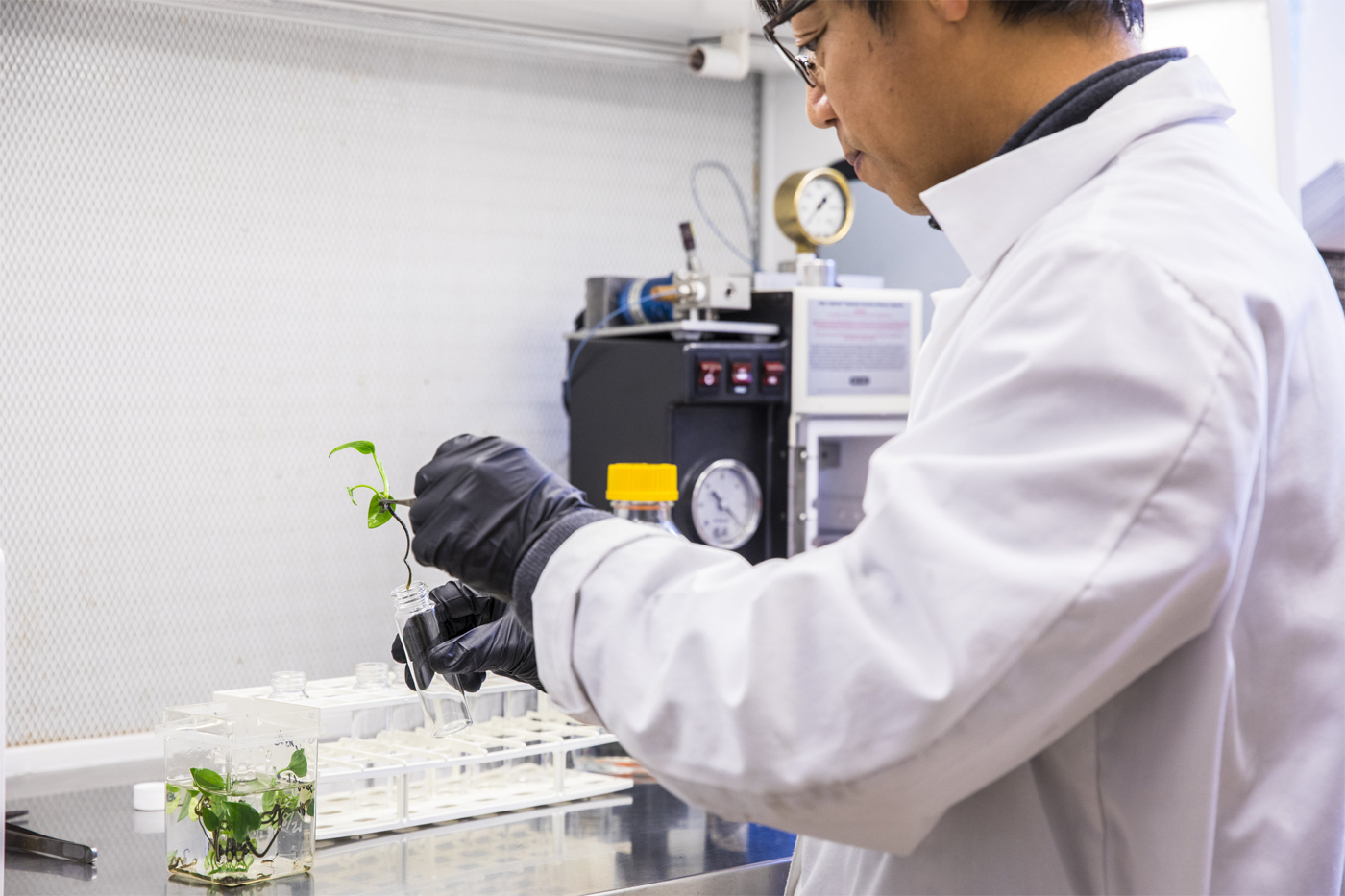Created the first GMO plant capable of removing carcinogens from the air

While in Russia the abbreviation GMOs frighten children like a babayka, researchers from the University of Washington with might and main genetically modified the most common domestic plant - indoor ivy. He was transplanted with rabbit genes and taught to remove carcinogens, chloroform and benzene, from the surrounding air. Their devil ivy is now able to produce cytochrome 2e1 protein found in mammals. That converts harmful compounds into useful resources that the plant uses for its own growth.
Small molecules like chloroform are contained in small quantities in chlorinated water, and benzene - in gasoline. Gradually, they can accumulate in homes as we shower, boil water, or store gasoline saws, lawn mowers, and machine components on the balcony. These molecules are too small, so they are not caught by air filters (even HEPA). But at the same time they can cause great harm to human health - for example, they increase the risk of developing cancer. Therefore, scientists have decided to “incite” their GMO plant on them.

The results of the research were published in the journal Ecological Science and Technologies in an article with (traditionally very long) title: “Improved removal of volatile organic carcinogens by genetically modified houseplant, ivy Epipremnum aureum, expressing the mammalian cytochrome P450 2e1 gene”.
Professor at the University of Washington Stuart Strand speaks about the work of the team:
People rarely talk about these dangerous organic compounds in their homes. I think the reason is that before we could not do anything with them. It makes no sense to discuss it if nothing changes. Now we have made a houseplant that will clean these pollutants for us.
Cytochrome 2E1, which is able to produce GMO ivy, is present in all mammals, including humans. In our bodies, 2E1 converts benzene to phenol, and chloroform to carbon dioxide and chloride ions. Protein is in our liver and is involved in work when we drink alcohol. Therefore, with the elimination of hazardous chemicals from the air (and from our lungs), it unfortunately does not help.
Dr. Strand explains:
We thought it would be good if this reaction could be achieved in the body of the plant. So to say, the concept of "green liver". An external body that helps us with the elimination of excess pollutants. Protein 2E1 is also useful for plants. The resulting carbon dioxide and chloride ions are used as “food”, and phenol helps to create cell walls. This ivy feels healthier and more energetic than its predecessor.
Scientists have created a synthetic version of the gene that serves as instruction for the production of rabbit 2E1. Then they implanted it in golden epipremnum so that every cell of the plant was able to express the protein.
One of the project leaders, Dr. Long Zhang, says:
The whole process took more than two years. This is a very long time when compared with other plants in our laboratory. The usual modification period is several months. But we wanted to do it with devil ivy, because it is a reliable houseplant that grows well in all conditions. In addition, he already knows how to capture formaldehyde and other toxic gases from the air, and therefore people who are concerned about the environmental situation are putting it at home.
Those who are afraid that GMO plants will rise, take up arms and take over the world, scientists reassure. These fears they also took into account. Golden epipremnum does not bloom in temperate climates, so its genes will not be able to spread around the planet along with pollen.

Dr. Zhang
To test the success of the experiment, hundreds of modified ivy were placed in small glass jars. Air pollutants were added there, and they began to measure how quickly they could reduce their dose, in comparison with ordinary plants (and if they can do it at all). Eleven days later, unmodified ivy showed no result. And in cones with “ivy-rabbits,” the concentration of carcinogens in three days decreased by 60-80%. After six days of chloroform in the air, the equipment no longer caught. Benzene was eliminated more slowly, but it, too, was almost gone by the tenth day.

The results are very impressive, but there is one catch. Plants must be in an environment that would blow their leaves. They themselves do not attract new chloroform from the air. That is, it will be necessary either to buy some small fan, or to breathe only in the area of a few centimeters around the ivy, otherwise there will be practically no effect. As long as the molecules from your bathroom get to the “green liver” in the hall, you are already inhaling with might and main.
Now the team is working to enhance the natural capabilities of golden epipremnum to remove formaldehyde from the air. It is present in some wood products (laminate, furniture made of chipboard / fiberboard / MDF), tobacco smoke, plastic. And also is a carcinogen, the concentration of which would not hurt to reduce.
The fact that their plant entered the market, so far there is no question. Scientists have many more tests to test all of its properties. And then for his thorough testing will take the state: USDA, EPA, FDA. Now obtaining permission for new GMO seeds to enter the US market takes an average of 13 years.

